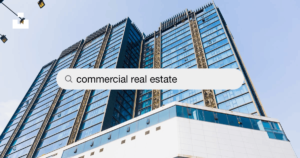Staging Commercial Properties for Sale: Maximizing Appeal and Attracting Buyers
Staging Commercial Properties for Sale: Maximizing Appeal and Attracting Buyers

Staging Commercial Properties for Sale: Maximizing Appeal and Attracting Buyers
Staging Commercial Properties for Sale: Maximizing Appeal and Attracting Buyers
Selling commercial properties can be a challenging task, especially in a competitive real estate market. To stand out from the crowd and attract potential buyers, it is essential to showcase the property in the best possible light. One effective strategy for achieving this is staging. Staging commercial properties involves creating an appealing and inviting environment that allows potential buyers to envision themselves in the space. In this article, we will explore the benefits of staging commercial properties for sale and provide valuable tips and insights to help you maximize the appeal of your listings.
The Power of Staging Commercial Properties
Creating a Memorable First Impression
When potential buyers walk into a staged commercial property, they are greeted with a visually appealing and well-organized space. The careful selection of furniture, decor, and accessories creates an inviting atmosphere that immediately captures their attention. A staged property stands out from competing listings and leaves a lasting impression on potential buyers.
Enhancing Visual Appeal
Empty commercial spaces can often appear cold and uninviting, making it difficult for buyers to visualize the potential of the property. By staging the space, you can bring it to life and showcase its full potential. Thoughtfully placed furniture, tasteful decor, and strategically chosen color schemes can transform a vacant space into a warm and welcoming environment that resonates with buyers.
Highlighting Functional Spaces
Staging allows you to highlight the functionality of different areas within a commercial property. By strategically arranging furniture and accessories, you can emphasize the purpose of each space, whether it’s an open-concept office area, a cozy meeting room, or a spacious reception area. This helps buyers understand how the property can meet their specific needs and requirements.
Increasing Perceived Value
A well-staged commercial property gives the impression of a well-maintained and high-value asset. Buyers are more likely to perceive a staged property as being worth its asking price. The attention to detail, cleanliness, and overall presentation can significantly impact the perceived value of the property, making it more attractive to potential buyers.
Helping Buyers Visualize the Possibilities
Staging allows buyers to see the potential of a commercial property. By showcasing various layout options, you can help buyers envision how they can customize the space to suit their specific business needs. This visualization can be a powerful motivator for buyers, as it helps them see the property as a viable solution for their business goals.
The Staging Process for Commercial Properties
Assessing the Property
Before you begin the staging process, it’s crucial to assess the property’s unique features, layout, and target market. Understanding the property’s strengths and potential limitations will help you make informed decisions during the staging process.
Defining the Target Market
Identifying the target market for a commercial property is essential for effective staging. Consider the industry or businesses that would be most interested in the property and tailor the staging to appeal to their specific needs and preferences. For example, if the property is ideal for creative professionals, consider incorporating modern and artistic elements into the staging.
Developing a Staging Plan
With the target market in mind, develop a staging plan that highlights the property’s strengths and addresses any potential weaknesses. Consider the flow of the space, the functionality of each area, and how different furniture arrangements can enhance the overall appeal. Create a timeline and budget for the staging process to ensure a smooth and efficient execution.
Renting or Purchasing Staging Furniture and Accessories
Once you have a staging plan in place, determine whether you will rent or purchase furniture and accessories for the staging. Renting furniture can be a cost-effective option, especially for properties that may take longer to sell. If you choose to purchase furniture, consider investing in versatile and timeless pieces that can be used for future stagings.
Staging the Property
When staging a commercial property, it’s essential to create a cohesive and professional look throughout the space. Choose furniture and accessories that complement the property’s style and target market. Arrange the furniture to optimize the flow of the space and highlight its unique features. Pay attention to lighting, cleanliness, and overall presentation to create an inviting and visually appealing environment.
Professional Photography and Marketing
Once the property is staged, it’s crucial to capture high-quality photographs to showcase the staged space in your marketing materials. Professional photography can significantly enhance the visual appeal of the property and attract more potential buyers. Use these photographs in online listings, brochures, and other marketing materials to promote the property effectively.
Regular Maintenance and Updates
As the property remains on the market, it’s essential to maintain the staging to ensure it continues to look its best. Regularly clean and tidy the space, replace any damaged or worn-out items, and update the staging as needed to keep it fresh and appealing to potential buyers.
Success Stories: The Impact of Staging Commercial Properties
Case Study 1: Transforming an Empty Office Space
In one success story, a vacant office space was transformed through staging. The addition of modern furniture, stylish decor, and vibrant artwork created an inviting and professional atmosphere. Potential buyers were immediately drawn to the space, and the property sold quickly at a higher price than anticipated.
Case Study 2: Enhancing a Retail Store’s Appeal
In another case study, a retail store was struggling to attract buyers due to its outdated interior. Through staging, the space was transformed into a trendy and contemporary retail environment. The updated look and feel of the store helped potential buyers envision their own business thriving in the space. The property sold within weeks of being staged.
Case Study 3: Maximizing the Potential of a Restaurant Space
A restaurant space that had been vacant for months received a makeover through staging. The addition of cozy seating arrangements, stylish lighting fixtures, and vibrant artwork created an inviting and trendy atmosphere. Potential buyers could envision their own restaurant concept thriving in the space, leading to a quick sale at a higher price than expected.
Conclusion
Staging commercial properties for sale is a powerful strategy for maximizing appeal and attracting potential buyers. By creating a visually appealing and well-organized environment, staging allows buyers to envision themselves in the space and understand its full potential. Through careful assessment, strategic planning, and attention to detail, you can transform a vacant or outdated property into a highly desirable asset. Whether it’s an office space, retail store, or restaurant, staging can significantly impact the perceived value and help you achieve a quick and successful sale. Embrace the power of staging and unlock the true potential of your commercial listings.







